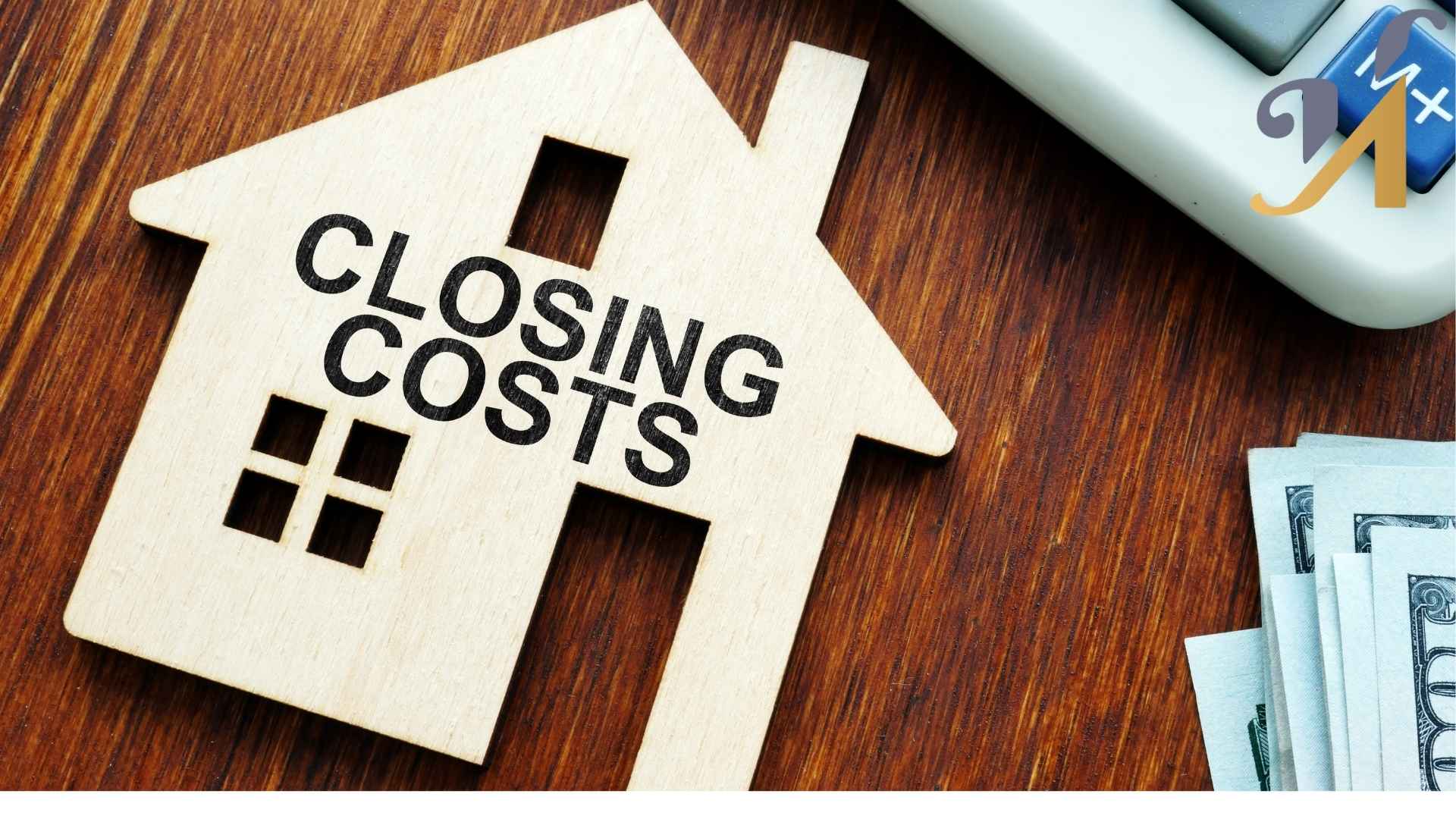When you’re buying a newly built home, one of the biggest surprises at the finish line can be the closing costs. These are the fees that cover everything from loan processing and title insurance to taxes and prepaid expenses.
According to most lenders, they usually range between 2% and 6% of the home’s purchase price. On a $400,000 property, that could mean an additional $8,000 to $24,000 due at the table.
At Hafsa Building Group, we’ve guided families through the new construction process for years, and we know how important it is to understand every cost before signing. Because we handle custom home building, our team is here not only to build your dream home, but also to help you handle the financial details that come with it.
What Are Closing Costs on a New Construction Home?
Closing costs are the extra fees you pay at the end of the home-buying process, on top of your down payment. They cover things like your loan processing, title insurance, property taxes, and prepaid expenses. Think of them as the paperwork and protection costs that make the transaction official.
For a new construction home, closing costs usually add up to 2% to 6% of the purchase price, according to most housing reports.
Unlike the down payment, which goes directly toward your equity, closing costs pay for the services that get you into the home: the lender’s work, the legal filings, and the insurance that protects both you and the bank. Some of these costs are fixed, like recording fees, while others depend on the size of your loan or even the builder you choose.
When you’re shopping for a new construction home, it’s smart to budget for both the down payment and closing costs. Otherwise, you could find yourself approved for a mortgage but short on the funds you need to sign at the finish line.
Typical Closing Costs Breakdown
Closing costs aren’t just one fee, they’re a bundle of smaller charges that cover the services needed to close your loan and transfer ownership. Here’s a breakdown of the most common ones you’ll see with a new construction home.
Loan and Lender Fees
These are charges connected to getting your mortgage. They often include:
- Origination fee: Paid to the lender for processing the loan.
- Appraisal: Verifies the value of the home (sometimes adjusted for new builds still under construction).
- Credit report fee: A small charge for pulling your credit history.
- Rate lock or discount points: Optional fees to secure a lower interest rate.
Together, these lender-related costs usually make up a significant portion of your closing bill.
Title and Legal Costs
Every home sale needs a clear title transfer, and that comes with fees:
- Title search and title insurance: Protects against claims on the property. New construction sometimes requires both an owner’s and a lender’s policy, which can increase costs.
- Attorney or settlement fee: Common in some states where an attorney oversees closing.
- Recording fees: Paid to the county for officially registering the deed.
Taxes, Insurance, and Prepaids
In addition to lender and title charges, you’ll prepay certain expenses at closing:
- Property taxes: These are prorated depending on your closing date.
- Homeowner’s insurance: Typically the first year is collected upfront.
- Prepaid interest: Covers daily interest from closing until your first mortgage payment.
- Escrow deposits: Funds set aside for taxes and insurance.
These amounts vary based on your loan size, location, and the time of year you close.
Builder-Specific Fees
With new construction, there are costs that don’t usually appear in a resale purchase:
- Survey and engineering fees: Done to confirm lot lines and construction compliance.
- HOA setup fees: If your new neighborhood has a homeowners’ association.
- Construction inspection or warranty fees: Sometimes added by builders to cover quality checks or warranties.
Some builders may also add administrative charges. On the flip side, many builders offer closing cost incentives if you use their preferred lender or title company, which can offset these fees.
Who Pays Closing Costs on a New Build?

Closing costs are usually shared between the buyer and the seller (or builder, in the case of new construction). But the split isn’t always 50/50 it depends on your loan type, your location, and what you can negotiate.
What Buyers Typically Cover
- Loan-related fees (origination, appraisal, credit report)
- Title insurance for the lender
- Prepaid taxes, insurance, and interest
- Recording fees and escrow deposits
What builders sometimes cover:
- Part of the buyer’s closing costs if you use their preferred lender or title company
- HOA setup fees or warranty coverage
- Incentives in the form of rate buydowns or credit toward closing costs
According to housing market data, more than half of new construction builders (56%) offer buyer incentives, and some in competitive markets contribute thousands toward closing costs.
Negotiation Opportunities
- Ask if the builder is offering any current incentives.
- Compare what you’d save by using their preferred lender versus an outside lender (sometimes the rate is higher if you take the credit).
- Check if local or state programs allow seller-paid closing costs in addition to builder incentives.
At the end of the day, buyers should expect to pay the majority of closing costs, but smart negotiations can shift part of that expense back to the builder, saving you thousands on move-in day.
New Construction vs Resale: Key Differences in Closing Costs Between
Closing costs come with any home purchase, but buying a brand-new home isn’t exactly the same as buying a resale. Here are the main differences you’ll notice when closing on new construction.
Extra Builder-Related Fees
New builds often include charges that don’t exist in resale transactions, such as:
- Surveys and engineering fees to confirm the lot lines and construction compliance.
- HOA initiation fees common in planned communities or new subdivisions.
- Construction inspection or warranty fees, builder-added costs to cover inspections or warranty programs.
These can push your closing costs slightly higher compared to resale.
Title Insurance and Dual Policies
With resale homes, title insurance is usually straightforward. In new construction, it’s common to have both a lender’s policy and an owner’s policy, sometimes at a higher premium, since the property is being transferred from a builder rather than a private owner.
Property Taxes and Prorations
For resale homes, property taxes are prorated based on the seller’s payments. With new builds, taxes may be estimated or prorated from the time construction finishes, which can lead to less predictable amounts at closing.
Inspections and Repairs
Resale homes usually come with multiple inspection costs (structural, HVAC, plumbing, etc.) and sometimes seller-paid repairs. With new builds, inspection requirements are lighter, and major repairs aren’t typically part of the deal. This can lower costs compared to resale, but you may see other builder-specific charges instead.
Builder Incentives vs Seller Concessions
While resale sellers may offer concessions (like covering part of your title fees or providing repair credits), builders more commonly offer closing cost credits or interest rate buydowns if you use their preferred lender.
How to Reduce Closing Costs
Closing costs don’t have to be set in stone. With the right strategy, you can cut thousands off your cash-to-close. Here are the most effective ways to save when buying a new construction home.
Builder Incentives and Credits
Many builders offer closing cost assistance if you use their preferred lender or title company. In competitive markets, incentives can be one of the most powerful ways to reduce upfront costs.
Always compare the savings against the loan terms. A builder’s lender may cover closing costs but charge a slightly higher interest rate, so run the math over the life of the loan.
Negotiation with Preferred Lenders
Even if the builder is offering incentives, don’t assume it’s the best deal. You can:
- Get quotes from outside lenders and ask the builder’s lender to match or beat them.
- Negotiate the allocation of costs (for example, having the builder cover title fees while you handle prepaids).
- Request that smaller “junk fees” be waived, such as processing or document preparation charges.
Government and State Assistance Programs
First-time buyers, in particular, may qualify for programs that cover part of their closing costs. According to the Washington Post, there are over 2,400 homeownership assistance programs in the U.S., and 32% of first-time buyers used them in 2024. These programs can provide grants, low-interest loans, or deferred-payment options for closing expenses.
Checking your state housing authority or local nonprofits is often the fastest way to see what’s available in your area.
Comparing Loan Types (Conventional, FHA, VA, USDA)
Your loan choice can also impact closing costs:
- Conventional loans allow seller or builder contributions, typically capped at 3–9% depending on down payment.
- FHA loans permit up to 6% seller/builder contributions toward closing costs.
- VA loans limit what buyers can pay (certain fees must be covered by the seller/builder).
- USDA loans allow closing costs to be financed into the loan in some cases.
Choosing the right loan type could save you not only on upfront costs but also on long-term payments.
Step-by-Step: How to Review Your Closing Disclosure
By the time you’re a few days away from closing, your lender is required to give you a Closing Disclosure, the final document that shows every fee, credit, and total dollar you’ll need to bring to closing. Reviewing it carefully can save you from last-minute surprises.
Here’s how to walk through it:
Step 1: Compare It to Your Loan Estimate
When you first applied, your lender gave you a Loan Estimate with projected fees. Now, line up the two documents side by side:
- Are the lender fees roughly the same?
- Did the title or appraisal charges change?
- Are any new fees added that weren’t disclosed before?
If something looks off, ask your lender for clarification before signing.
Step 2: Focus on the Cash-to-Close
The Closing Disclosure clearly shows your cash-to-close, the total amount you need to bring on signing day. This includes your down payment, all closing costs, minus any builder incentives, seller credits, or assistance programs. Double-check that all expected credits are applied correctly.
Step 3: Check Taxes and Prepaids
Make sure property taxes, homeowner’s insurance, and escrow deposits are listed accurately. In new construction, property taxes may be estimated if your county hasn’t assessed the property yet, so ask how they calculated it.
Step 4: Review Title and Insurance Fees
Confirm whether you’re paying for both an owner’s title policy and a lender’s policy. In some states, builders may cover part of these costs, so make sure it’s reflected properly.
Step 5: Ask About “Junk Fees”
Look out for small charges like “document prep,” “processing,” or “courier fees.” Some are legitimate, but others may be negotiable. A quick question to your lender could save you hundreds.
Step 6: Get Everything in Writing
If you’ve negotiated incentives or concessions with your builder, make sure they appear on the Closing Disclosure. Verbal promises don’t count, only what’s listed on the form will be honored at closing.
Ready to Plan Your New Home?
Closing costs don’t have to be confusing. By knowing what they include, who pays for them, and how builder incentives or assistance programs can help, you can walk into your closing day fully prepared.
At Hafsa Building Group, we believe clarity is just as important as craftsmanship. If you’re planning a custom-built home, our team is here to guide you through every step, from construction details to the fine print at the closing table.
We’re dedicated to delivering homes built to the highest standards of quality while keeping costs transparent and competitive. That way, you can focus on what really matters: moving into a home designed for your future.
Contact Hafsa Building Group today to start building your dream home with confidence.






